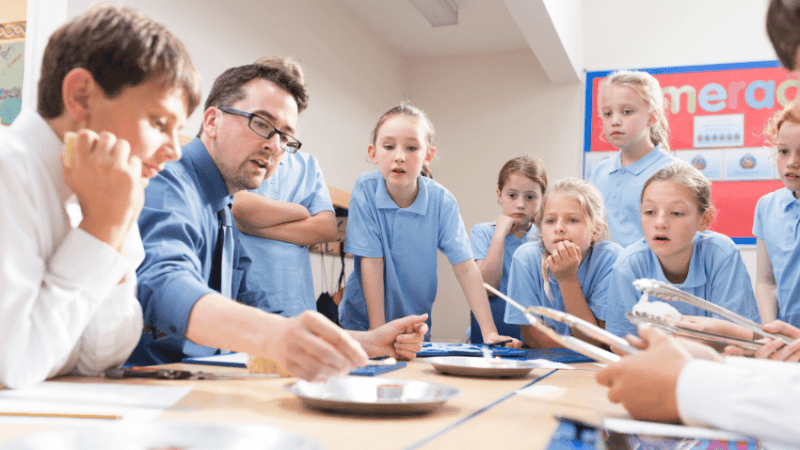Onwards and upwards – How to make and measure progress in a single lesson

Measuring short-term development? Can’t be done, right? Think again. Showing pupils their immediate learning gains is a huge motivator, and here’s how you do it, says Isabella Wallace…

Diets are really hard work, and not especially enjoyable.
Most people give up on a diet for one simple reason – they don’t see quick, visible evidence of their progress.
But, if we could step on the scales at the end of the first day of our diet and see that we’d already lost half a pound, then we’d be able to see that the effort, frustration and perseverance were all worthwhile. We’d be utterly motivated.
Not all lessons can be fun and exciting. Sometimes they have to be a bit like that diet – worthwhile, but hard. And when that happens, flagging up the progress that pupils have made and celebrating it at regular intervals can be just what the doctor ordered.
Why please the observers?
But how, exactly, do you do that? It’s one of the most common questions I get asked by teaching colleagues: “How can I demonstrate progress in a single lesson?”. But when I enquire as to whom they want to demonstrate the progress, the answer is almost always the same – they want to know how to make progress visible to an observer. When you think about it, this is a rather strange notion. There are a number of reasons people choose teaching as a profession, but I’ve yet to meet anyone who threw themselves into a career of classroom antics in order to fulfil a ‘pupil progress’ requirement on an observation form. Forget about the observers, the inspectors, the learning-walkers, it is the children to whom we need to make the progress evident. It is they who need to clearly see and understand the value that our lesson adds; the success and achievement that results from their hard work each session.
Significant but imperceptible
So what does progress in a single lesson look like? There has been much discussion around this question, with some educators asserting that there is no such thing – that genuine progress can only happen in the long-term. After all, pupils forget and have to revisit concepts, they learn at different paces and in various ways.
As primary teachers, we know that progress can look very different in each subject. For example, if we spend some time teaching children to ride a bike, use a compass or float on their backs, we would probably expect to see clear, visible progress by the end of the session. Moreover, we would probably anticipate that such progress would be permanent, and that we could build on it next lesson.
On the other hand, when we introduce a concept like multiplication to pupils, we might spend several lessons sowing seeds of understanding in their heads, and only several weeks later will they begin to demonstrate understanding and an ability to apply what we’ve been teaching them.
Either way, one thing is certain: a good lesson will move pupils forward in one way or another, and when that forward movement is significant but almost imperceptible, it is up to us teachers to illuminate it for our learners before they hurtle into ‘What’s the point?’ mode. So here are just a few ways to check and celebrate progress is a single lesson.
Before and after shots
One of the easiest ways to highlight progress in a lesson is to explicitly establish a starting point from which new learning and understanding can be measured. If pupils can add significantly to an initial pre-assessment task or ‘before shot’, then their progress will be far more visible. ‘After shots’ at the end of the lesson need to be measured against each individual’s original starting point.
Determine your pupils’ starting points
Try using a strategy like ‘What I know from A to Z’ where learners can work as individuals, pairs or in groups. Ask them to write the letters of the alphabet down their page and then consider the given topic carefully. Their task is then to think of at least one topic-related word or phrase that begins with each of the letters.
Then, try this – at the end of the lesson, or for homework, ask pupils to add to their list. If they have acquired new knowledge or understanding they should be able to add more words or phrases to their original list in a different colour pen, so that they can clearly see what gains have been made.
Don’t know/do know
Pupils being able to answer their own original questions is a reassuring indication of new learning and an effective way to show them how they have moved from a point of ‘not knowing’ to a point of ‘knowing’ by the end of a lesson.
Try using a question-gathering technique such as ‘The Wonderball’, where pupils stick their Post-it note questions onto a beach ball as it’s passed around at the beginning of a lesson; then remove and answer those same questions when the ball is passed at the end.
Flight checks
Issuing ‘Boarding’ and ‘Landing’ cards can also be a great way to gain information about prior learning, existing knowledge, and areas of confusion. Pupils use their ‘boarding card’ at the beginning of a lesson to record key information they remember learning last lesson, as well as anything they still don’t ‘get’.
These cards can give you an overview of what pupils have retained from previous lessons, as well helping pupils to recall and review their learning and consider what still seems unclear to them, and they are an effective way of getting pupils to articulate condense and celebrate their new learning.
Progress pitfalls
Watch out for some of these classroom clangers when planning for progress in a single lesson
- Too little, too late
While it’s great to establish a starting point at the beginning of a lesson and to review progress at the end, we shouldn’t leave all monitoring of understanding until the closing minutes. Helping learners to make sustained progress requires frequent evaluation of their level of skill and knowledge, so that we can subsequently set just the right tasks to help them move onwards and upwards. It’s no good discovering at the end of a lesson that half of your little darlings are still clueless. - Progress shmogress!
Beware of meaningless, pseudo-demonstrations of progress. These often come in the form of asking pupils to stick their thumbs up if they’ve understood, or mark their position on a progress graph. This sort of strategy will, at best, only give us an indication of the learners’ perception of their own understanding. Good rarely comes from scenarios where a teachers says, “Everyone gets it? Great – let’s move on!”. - Artificial assessments
I’ve heard terrible tales of teachers being asked to crowbar in a ‘progress check’ at an unnatural and inconvenient moment in a lesson, simply in order to ‘demonstrate progress’ to an inspector or other observer. Teachers need to be able to use their professional judgement regarding when to seek feedback about understanding. And don’t let anyone tell you otherwise.
Isabella Wallace is co-author of the bestselling teaching guides, Pimp Your Lesson and Talk-Less Teaching. Well known for her highly popular CPD events, she presents nationally and internationally on outstanding teaching and learning. For more information, visit www.isabellawallace.com or follow @WallaceIsabella.










